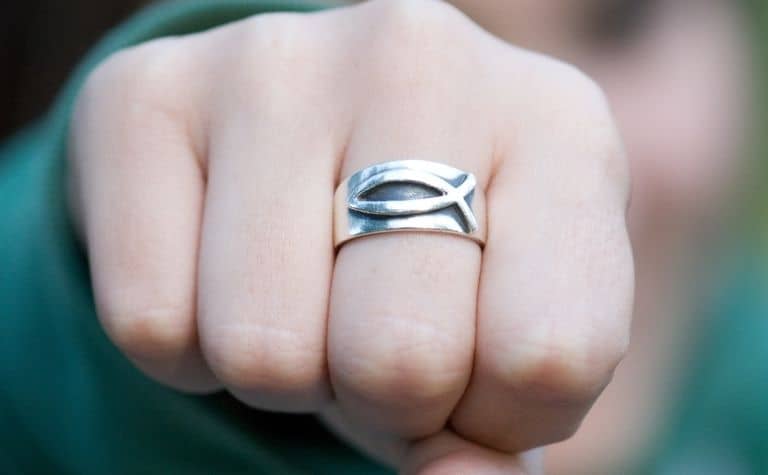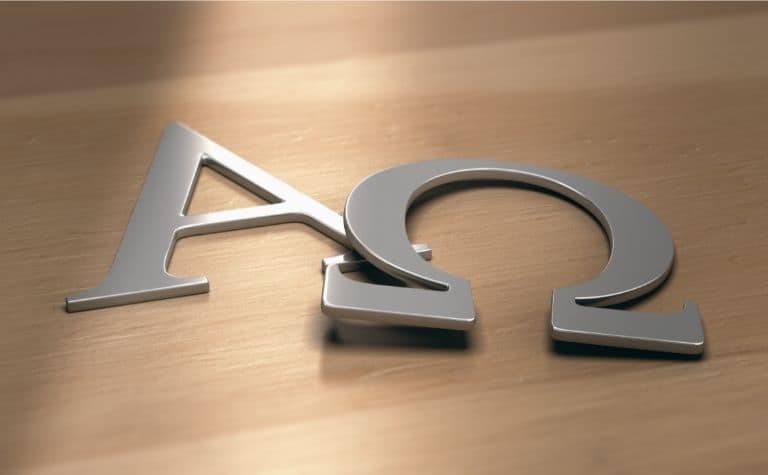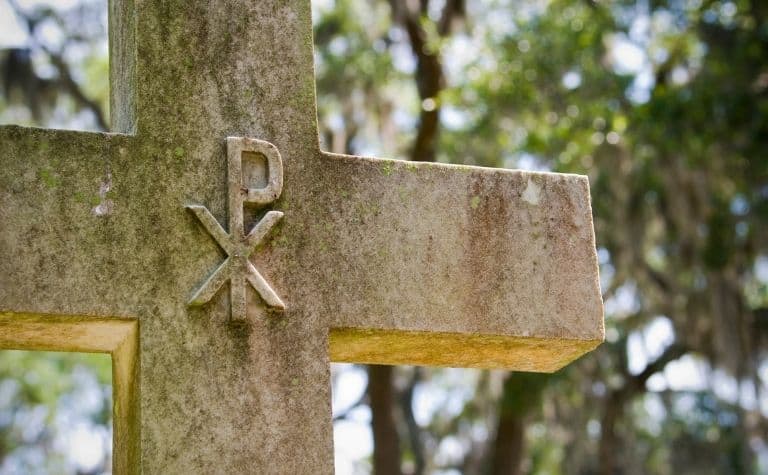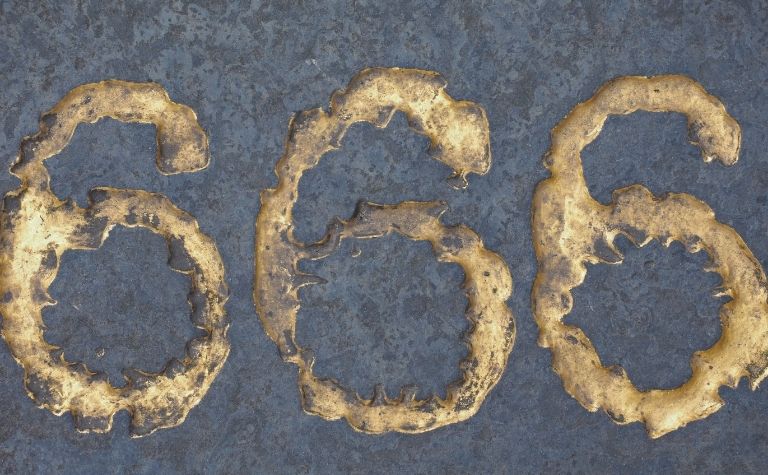Christians have used symbols as expressions of their faith since the time of Jesus Christ. Biblical authors used symbolism in their writings, and readers employed many of them in their churches and homes. Some symbols used in Protestantism are also used in other branches of the Christian faith.
A fish, the Latin cross, the Alpha and Omega, the anchor, the Chi Rho, and a variety of numbers and colors are common symbols in Protestant Christianity. Most symbols are associated with a teaching of Jesus Christ or an event in his life.
What does each symbol mean? What is the biblical basis for each symbol? How do Christians use each of these symbols? Keep reading to learn more.
ICHTHYS: The Christian Fish Symbol

A fish is one of the most common symbols of Christianity. In the early church, believers would carve a fish into stone. Today, believers stick silver plastic fish to the back of their vehicles.
They also wear the fish symbol on jewelry and display it on art in their home. Some Christians even get tattoos of the fish symbol. (Also see Why Did Protestants Leave the Catholic Church?)
How old is the fish symbol come from? The fish symbol is nearly as old as the church itself. There is evidence that people in the early church used the fish symbol to identify themselves as Christians.
In some accounts, a person would draw half of the fish in the sand. If another person completed the drawing, it showed that they were also a Christian. Believers would often find creative ways to communicate during times of intense persecution.
Where does the fish symbol come from? Historians speculate that the symbol comes from Jesus telling Peter, “And he said to them, ‘Follow me, and I will make you fishers of men'” (Matt. 4:19). Others have suggested that the symbol may also be associated with baptism, which occurs in water; it is also where fish live.
What does ICHTHYS mean? The word ICHTHYS is commonly found on décor in church. The word is carved into crosses, appears in stained glass windows, and is etched onto communion wafers.
ICHTHYS is the Greek word for fish, transliterated into English. (“Transliterate” means to render a word from one language into another using the closest corresponding letters.) Yet Protestants also use ICHTHYS as an acronym. (Also see Protestant vs. Non-Denomination: What’s the Difference?)
Why is ICHTHYS sometimes spelled IXOYE? The IXOYE version of the word is not transliterated into English but in Greek. The Greek letters are capitalized, not lowercase. The letter “I” is a Greek iota. The “X” is a Greek chi. The “O” is a theta. The “Y” is an upsilon. The “E” is a sigma.
The Christian Cross: Latin Cross or Crucifix?

The cross is the most recognizable symbol of Christianity, in the Protestant tradition or in any other. The purpose of the T-shaped design, with a long vertical bar and a smaller horizontal bar affixed and intersecting one-third of the way down the horizontal bar, was to provide maximum functionality as a device used for execution during the Roman Empire. (Also see Why Don’t Protestants Use Crucifixes?)
Why is the Protestant cross empty? Protestants prefer an empty cross to a crucifix. Crucifixes, which are crosses that depict Jesus nailed to them, are common in traditions like Roman Catholicism. Most Protestants use empty crosses, historically referred to as a Latin cross, because it reminds them that Jesus is not dead but alive.
Some Protestants also believe that displaying an image on Jesus’ body is a violation of the second commandment about creating graven images: “You shall not make for yourself a carved image, or any likeness of anything that is in heaven above, or that is in the earth beneath, or that is in the water under the earth” (Exod. 20:4, ESV). (Also see Why Don’t Protestants Make the Sign of the Cross?)
Alpha and Omega: Greek Letters, Christian Symbol

Alpha is the first letter of the Greek alphabet. Omega is the last letter. Most Christian symbols, including the Alpha and Omega, are rooted in a teaching of Christ (e.g., the fish symbol) or in an event in his life (e.g., the cross symbol). The Alpha and Omega are rooted in something Christ said in the book of Revelation.
“‘I am the Alpha and the Omega,’ says the Lord God, ‘who is and who was and who is to come, the Almighty.'” (Revelation 1:8, ESV)
What does it mean that Jesus is the Alpha and Omega? Bible scholars describe this teaching of Jesus as a merism. A merism is a figure of speech that describes the beginning and end of the same thing, but it also implies everything in between.
It is similar to the description of God found in Isaiah 44:6, “Thus says the Lord, the King of Israel and his Redeemer, the Lord of hosts: ‘I am the first and I am the last; besides me there is no god’ (ESV).
The Alpha and Omega symbol appeared on the graves of Christians during the time of the Roman Empire and reflected the hope that believers had that Jesus will return to Earth, defeat evil, and welcome believers to eternal life. (Also, see Protestant vs. Non-Denominational: What’s the Difference?)
Christian Anchor Symbol

An anchor symbolizes security during the storms of life. An anchor expresses stability, perseverance, and hope for calmer waters. The anchor is used metaphorically in the New Testament book of Hebrews, so it is not surprising that Christians have used it as a symbol through the centuries.
“We have this as a sure and steadfast anchor of the soul, a hope that enters into the inner place behind the curtain, where Jesus has gone as a forerunner on our behalf, having become a high priest forever after the order of Melchizedek.” (Hebrews 6:19-20, ESV)
Anchor symbols have been found on Christian graves that date to the time of the Roman Empire. Sometimes the anchor design is combined with a cross design, as seen in the picture above. (Also see Protestant vs. Baptist: What’s the Difference?)
Chi Rho: Greek Letters, Christian Symbol

The Christian symbol, “Chi Rho,” consists of two Greek letters, Chi and Rho. In English, the letters look like a capital P and X. However, P is actually the Greek capital letter Rho and X is the capital Greek letter, Chi. In the common display of the Chi Rho symbol, the letters are overlapping. (Also, see Protestant vs. Eastern Orthodox: What’s the Difference?)
What does the Chi Rho stand for? Chi and Rho are the first two letters in the Greek word for Christ. The Greek word for Christ in all capital letters is ΧΡΙΣΤΟΣ.
The Chi Rho was also used in the Roman Empire at the time of Constantine (272-337), who borrowed the symbol from Christianity after his vision of Christ before the Battle of the Milvian Bridge in 312 A.D. The Chi Rho later appeared on coins, churches, gravestones, and much more.
“On the top of the whole was fixed a wreath of gold and precious stones, and within this the symbol of the Savior’s name, two letters indicating the name of Christ by means of the initial letters, the letter X intersection P at the center.” (Eusebius, 260-339, Church historian)
Numbers as Christian Symbols From the Bible

Numbers are commonly used as symbols in the Bible. Sometimes numbers in the Bible are used literally, and then believers adopt them as symbols. Other times the biblical author’s intent is to use a number symbolically. (Also, see Protestant vs. Evangelical: What’s the Difference?)
The symbolic use of numbers (and colors, see below) is often seen in apocalyptic literature. Apocalyptic literature is a genre of literature found in the Old and New Testaments, especially in the Book of Revelation and in the last half of the Book of Daniel. Here is the general meaning of numbers when they are used symbolically:
- One symbolizes unity, e.g., unity among the Trinity and unity among believers.
- Two symbolizes dualism, though not in the philosophical sense; dualism also does not necessarily mean opposing entities; for example, the deity and humanity of Christ are not in opposition to each other.
- Three symbolizes the Trinity: Father, Son, and Holy Spirit.
- Four symbolizes the Gospels or the Earth, perhaps in relation to the four points of a compass.
- Five symbolizes the traditional five wounds Christ suffered on the cross.
- Six symbolizes creation because, according to Genesis 1, God created the Earth in six days.
- Seven symbolizes perfection, which is based on the six days of creation, plus God’s rest on the seventh day.
- Eight symbolizes regeneration; in some traditions, baptismal fonts are eight-sided, and so too is the baptismal cross.
- Ten symbolizes completion, e.g., the Ten Commandments and Ten Plagues.
- Twelve symbolizes the Church universal, e.g., the 12 tribes of Israel and 12 apostles.
- Forty symbolizes trial or testing, e.g., Israel’s wandering in the wilderness, Moses’ stay on Mt. Sinai, and Jesus’ temptation in the wilderness.
- 666 symbolizes evil; it’s used to describe the name of the beast in the Book of Revelation.
“This calls for wisdom: let the one who has understanding calculate the number of the beast, for it is the number of a man, and his number is 666.” (Revelation 13:18, ESV)
Colors in the Bible

Like numbers, biblical authors may describe the literal color of something, and then readers adopt it as a symbol. Other times, a biblical author may intend a symbolic meaning for a color they mention, which believers then use as a symbol. Here are the general meanings of colors when they are used as symbols in the Bible:
- Red: blood, sin, war, death
- Gold: value, holiness, beauty
- Blue: sky, heavens, creation
- White: purity, holiness, redemption, salvation
“Now I saw heaven opened, and behold, a white horse. And He who sat on him was called Faithful and True, and in righteousness He judges and makes war.” (Revelation 19:11, ESV)
- Black: death, judgment, evil
- Green: life, provision, creation
- Purple: royalty, clergy, worship
- Bronze: strength, stability, perseverance
References:
[1] Source
[2] Source
[3] Source
Related Questions
Catholic vs. Protestant vs. Orthodox: What's the Difference?
Roman Catholicism, Protestant Christianity, and the Eastern Orthodox Church are the three historical branches of the Christian religion. Each tradition traces its doctrines and practices to the New...
Protestantism and Anglicanism are branches of the Christian faith that have roots in Europe. Protestantism and Anglicanism have similarities and differences with each other as well as other...
